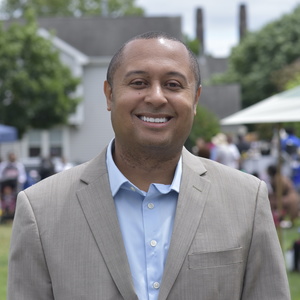Governor
Aaron Lewis
0 CTNewsJunkie Reader Endorsements

Party: Libertarian Party
CEP Status:
Website: aaronlewisforct.org
Age:
Marital Status:
Current Residence: Rocky Hill
Current Job:
Previous Job:
Previous Job:
Education:
Robert Stefanowski
0 CTNewsJunkie Reader Endorsements

Party: Republican
CEP Status:
Website: bobforgovernor.com
Age:
Marital Status:
Current Residence: Madison
Current Job:
Previous Job:
Previous Job:
Education:
Ernestine Holloway
2 CTNewsJunkie Reader Endorsements

Party: Independent Party
CEP Status:
Website:
Age: 51
Marital Status: Single
Current Residence: Meriden
Current Job: Pastor
Previous Job:
Previous Job:
Education: School of Theology - Domestic Violence/Sexual Assault Certifications
Michelle Bicking
0 CTNewsJunkie Reader Endorsements

Party: Green Party
CEP Status: nonparticipating
Website:
Age:
Marital Status:
Current Residence: Newington
Current Job:
Previous Job:
Previous Job:
Education:
Edward Lamont
4 CTNewsJunkie Reader Endorsements

Party: Democrat
CEP Status:
Website: www.nedlamont.com
Age:
Marital Status:
Current Residence: Greenwich
Current Job:
Previous Job:
Previous Job:
Education:
Robert Hotaling
0 CTNewsJunkie Reader Endorsements

Party: Independent Party
CEP Status:
Website: robertbhotaling.com
Age: 44
Marital Status: Married
Current Residence: Cheshire
Current Job: SVP of Webster Bank
Previous Job: Founder & CEO of Verbi
Previous Job: Managing Consultant & Solutions Architect of IBM GBS
Education: Stanford-trained UConn BSEE
YouTube:
What action(s) will you take to reduce out-of-pocket drug costs and reduce the impact of the cost of prescription drugs on taxpayers and insurance premiums?
We believe the state health plan should negotiate drug prices not only for retirees but all state residents to be reflected in every health insurance plan in the state. We’d like to use generics as much as possible where name brands are one of the reasons prescription drugs are so expensive. Currently, rebates and discounts are not reflected in the final cost to the consumer. Volume rebates and discounts are given to the providers and distributors. We need to pass these on as discounts to the consumers.In these inflationary times, what will you do to help ensure that Connecticut’s middle-income retirees on fixed incomes are able to keep more of their hard-earned money in their pockets?
We propose reducing the cost of living for all Connecticut residents including seniors by eliminating motor vehicle taxes, complete the phase out of taxes on pensions and 401K plans, and eliminate hidden fees and taxes that are passed on in cost of goods and services including utilities. Additionally, modeled on social security, we believe in subsidizing health care gaps of retirees beyond what’s covered by Medicare or Medicaid (Husky) for those who have lived and worked in the state for at least 10/20/30 years.How do you plan to address the growing long-term care workforce crisis in the state?
We owe our elders respect and compassion for creating the world we live in. We have a labor shortage for practically every industry including medical workers. Long term care workers are a key factor in providing services to our elderly and are undervalued in society. We’d like to see them have greater ability for career advancement; for example, grow from care workers to technicians to nurses depending on their motivation for higher pay, better benefits and professional development. An apprenticeship model of advancement where you earn while you learn is the preferred way to approach this industry. The workers caring for our loved ones should be incentivized with higher pay, better benefits and tuition reimbursement for advancement in their field. We like to see more people age at home to as great a degree as possible through preventative healthcare, technology and at-home assistance, saving individuals money in reducing the number of long term care workers needed.Gas prices are higher than ever, which is difficult for older adults on fixed incomes. Yet, alternatives to cars in Connecticut are limited. What will you do to help older adults access other forms of transportation?
We will work with Uber, Lyft, and local taxi services to provide door-to-door service integrated with public transportation with monthly or annual passes based on financial need. We’d like to keep the public component free so only the first and last mile taxis would have to be paid. These passes will be discounted with help from the transportation services partnering with the state and local governments.What are the two most urgent problems facing Connecticut within the context of climate change and the environment, and what will you propose to solve them?
The most urgent problems are rising sea levels and associated flooding, extreme weather and its impacts on potable water. To address extreme weather, we should make strategic investments in alternative energy sources, such as solar and wind power, energy storage as well as heat pumps and insulation to minimize fossil fuel use for space heating. We need to encourage private investments to look at energy as a long-term investment with its associated environmental and economic benefits rather than just savings on a monthly bill. To address rising sea levels and flooding, we’ll have to invest in infrastructure to address storm surges and higher sea levels and associated loss of land.How can Connecticut's education systems create better outcomes for students in low-income communities?
Connecticut’s secondary education is #8 in the nation, yet we’re dead last in the education achievement gap, which means we’re also dead last in the opportunity gap for low-income communities. The three keys to improvement are 1) ensuring that all children are literate by the third grade, 2) students have equal access to healthy learning environments regardless of zip code or income, and 3) that classroom sizes and student-to-teacher ratios never climb above 20/1. We propose restructuring the Education Cost Sharing (ECS) model to base it on educational outcomes rather than complex demographics.Pedestrian deaths spiked a few years ago and remain high, and it's fairly clear that driver behavior, such as distracted driving, is only getting worse despite significant efforts by law enforcement to stop it. How can Connecticut's streets be made safe for pedestrians and bicyclists?
I am a technology expert who has noted that Connecticut lags behind many other states in best use of technology to create a safer environment. This applies not only for pedestrians and cyclists, but other at-risk groups as well. Better use of modern sensors and network technologies can be both affordable and effective. City planning and road design needs to be improved to maximize safety, not speed, including more pedestrian walkways and dedicated bicycle lanes. Additionally, red light cameras can be expanded to fine motor vehicle owners for moving violations.How should the state and its school districts deal with COVID-19 going forward?
The social development of students is best achieved with other students in a classroom. Classroom education with peers is the best model. However, there are circumstances where certain students are not able to attend due to health, disability or other where they need to learn in a structured, remote environment designed and dedicated to their needs. Both learning models need dedicated delivery of classroom or remote instruction, respectively. This offers better choices for students, parents, teachers and school administrators to use policies appropriate to their local district needs. Students and parents who wish to attend in-person should be fully vaccinated for infectious diseases (measles, polio, Covid-19, etc.) causing serious illness and death. If full vaccination is not possible, then the remote learning option would be made available. Regional delivery of the remote learning program and technology to support it would be supported.What should be done on the state level to further address Connecticut's lack of affordable housing? Do you support, for example, mandating or incentivizing towns and cities to alter their zoning codes to be friendlier to affordable housing?
We support CT towns and cities becoming more accessible and vibrant with low income or affordable housing. We need to level the playing between towns and developers incentivizing those who build affordable units that fit within town esthetics and zoning laws. We would restructure 8-30G to classify affordable housing as affordable by grand list assessment rather than government ownership and deed restriction. This allows the recognition of natural affordable housing in a variety of communities such as in-law apartments, carriage houses, un-refurbished older homes, and apartments not under deed restriction to rent out. Our strategic approach is an integrated policy that combines 8-30G with community involvement of marginalized citizens to renovate and refurbish existing properties such as abandoned homes while protecting property values. Towns and cities need to shift their thinking about any presumptions of lower income families and consider the benefits of a more diverse community.What can be done to prevent excessive consolidation of the healthcare industry and the loss of services – or, in some cases, the loss of small hospitals themselves – in the state's rural areas?
Consolidation is a fact of any industry. Complying with state regulations, medical insurance and other regulatory factors make it difficult for smaller organizations to continue to exist. The solution to excessive consolidation is improving the environment for competition where smaller hospitals and medical centers need to continue to exist so they provide services to their immediate area. We need to make it easier to treat medical issues at the local, simpler level rather than starting at a larger hospital. We would look forward to sitting down with larger organizations like Yale Medical and Hartford Medical to review their plans and take a more active role in a partnership to preserve the importance of local healthcare access. To address loss of services, we would expand the 32 community health centers and school based health services, and offer more urgent care centers. Large hospitals need a lot of capital and provide a lot of specialization that needs a large population to achieve medical competence. We believe rural areas need more primary care and secondary care availability so that only the most difficult advanced cases would be transferred to a nearby city hospital.Do you think the state's two major electric utilities (Eversource and United Illuminating) are sufficiently regulated? If not, what measures would you take to ensure that consumers are protected to the greatest extent possible against prolonged loss of services and unfair rate increases?
Yes, they are sufficiently regulated but the parameters they are judged by are inappropriate. They should be prioritizing resiliency, lower cost and customer service. We’ve had multiple extended power outages in the past decade and with climate change, we’ll see even more yet we still have major lines on poles with overhanging trees nearby when we could bury electric lines more affordably compared to a town being out of electricity for days on end. Our transmission rates are more expensive than many states’ entire power rate (generation and transmission). PURA needs to narrow the gap in our costs and answer why our power is more expensive than other states when most utilities buy on the open market. Strategic state investments in micro-grids and encouraging private investment in distributed power generation, energy efficiency and energy storage should address costs, resiliency and environmental improvement. This requires leadership that deeply understands both technology and financials so we can make regulations that both fit the cost structures of utility companies, while significantly reducing consumer costs.What is your position on whether Connecticut should open its election primaries to unaffiliated voters?
More choice is better for the electorate, just as more choice is better for every other industry or service, making competition an incentive to get politicians to do a better job. Unaffiliated voters, which are the largest voting block in the state, should have the right to vote in open primaries. All taxpayers pay for primaries which are currently closed to non-party members when every paying voter should have the right to select who their choices will be in the general election.Themis Klarides
2 CTNewsJunkie Reader Endorsements

Party: Republican
CEP Status: nonparticipating
Website:
Age:
Marital Status:
Current Residence: Madison
Current Job:
Previous Job:
Previous Job:
Education:
Timothy Elgin
0 CTNewsJunkie Reader Endorsements

Party: Republican
CEP Status: nonparticipating
Website:
Age:
Marital Status:
Current Residence: Westport
Current Job:
Previous Job:
Previous Job:
Education:
